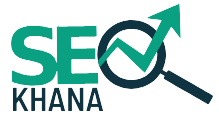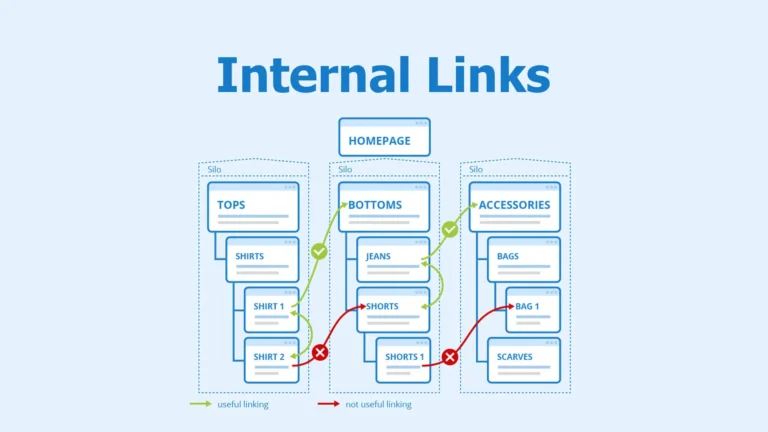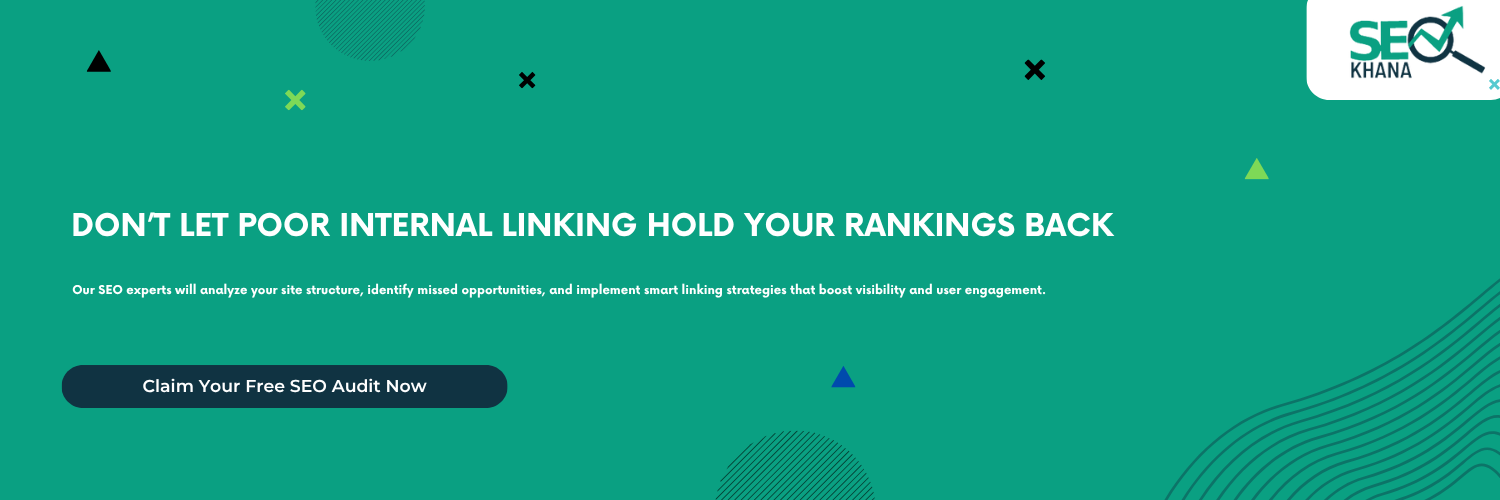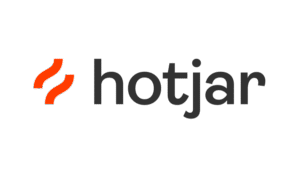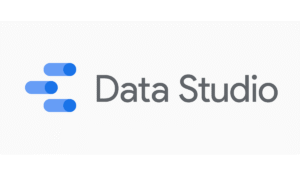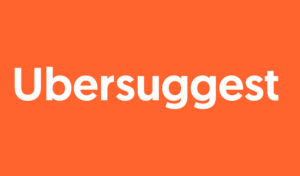If you’re investing time and effort into creating great content but not seeing the SEO results you expect, you might be missing a crucial element: a well-planned network of connections within your site. This often-overlooked tactic guides both users and search engines, strengthening your website’s structure, increasing visibility for key pages, and building authority from the inside out.
In this guide, we’ve covered how to develop an effective strategy, explored best practices, and reviewed the top tools to create a smart and scalable linking system. Whether you’re new to SEO or aiming to enhance your current efforts, mastering this technique can transform your site’s performance.
What is Internal Linking?
Connecting one page of your website to another through hyperlinks is a key practice in web navigation. Unlike external links, which direct users to other websites, these links keep visitors within your own site—guiding them to related articles, products, or information.
From an SEO perspective, this technique plays a crucial role in helping search engines discover and understand the hierarchy of your content. When implemented effectively, it distributes page authority across your website, highlights your most important pages, and improves overall crawlability.
A strong linking structure makes it easier for both users and search engines to navigate your website. Think of it as building clear and logical roads between different parts of your digital property. The better these connections are, the easier it is for search engine crawlers to index your content—and for visitors to stay engaged.
In short, linking within your site is not just about adding hyperlinks—it’s about creating meaningful connections that make your content more accessible, visible, and ultimately, more powerful.
Why Internal Linking is Important for SEO
While often underestimated, linking between your own pages is a key component of a solid SEO foundation. It not only supports better visibility in search engines but also improves user experience and site structure. Here’s why it’s essential:
- Improves Crawlability: Helps search engine bots efficiently discover and index all pages across your website.
- Enhances Site Navigation: Guides users to related content, improving overall site usability and time on site.
- Boosts Page Authority: Distributes link equity from strong pages to others, supporting better rankings.
- Clarifies Site Structure: Builds a clear and logical internal linking structure, making your content easier to understand.
- Strengthens Keyword Relevance: Supports seo internal linking by connecting content around specific themes or keywords.
- Supports Content Hierarchy: Shows search engines which pages are the most important through smart internal linking strategy.
- Drives SEO Performance: Ultimately helps improve SEO by aligning technical optimization with user behavior.
How to build an effective internal linking strategy
Creating a smart and sustainable approach to connecting pages within your site can significantly improve your SEO performance. Below is a step-by-step guide to building a strategy that works:
1. Identify Pillar Content
Start by selecting your most important and comprehensive pages—these are often called “pillar” or “cornerstone” content. These pages cover broad topics and serve as the main hubs that other related pages can connect to. For example, if your website is about digital marketing, your pillar pages might include topics like SEO, content marketing, or email automation.
🟢 Why it matters: This helps define your site’s structure and allows link equity to flow to pages that matter most for ranking.
2. Map Supporting Articles
Once you’ve defined your pillar content, map out the supporting pages—such as blog posts, tutorials, or product pages—that relate to each topic. These should naturally refer back to the main topic and vice versa, creating a content cluster.
🟢 Why it matters: This approach strengthens seo internal linking by showing search engines the depth and relevance of your content around specific themes.
3. Use Descriptive Anchor Text
When linking between pages, use clear, keyword-rich anchor text. Instead of vague words like “click here,” use phrases that describe the destination page, such as “learn more about on-page SEO techniques.”
🟢 Why it matters: Descriptive anchor text improves keyword association, enhances user experience, and supports internal linking to improve SEO.
4. Link Deep into Your Site
Many websites only link to the homepage or main categories. To build a robust structure, make sure you’re also connecting to deeper pages, including older blog posts or hidden gems that deserve more visibility.
🟢 Why it matters: It helps spread link authority more evenly across your site and increases the visibility of lesser-known but valuable content.
5. Balance Quantity and Quality
Don’t overload a single page with too many links. A handful of well-placed, relevant links are far more effective than dozens that distract or confuse readers.
🟢 Why it matters: Following internal linking best practices ensures links are meaningful and don’t dilute the user experience or SEO value.
6. Keep the Structure Logical
A well-organized linking path mirrors a logical hierarchy—from broad categories to detailed content. This makes your site easier to crawl and understand for both users and search engines.
🟢 Why it matters: A clear internal linking structure communicates the relationship between pages, which boosts site authority and ranking potential.
7. Update and Optimize Regularly
SEO is not a set-it-and-forget-it process. Revisit older content to add new links where appropriate. As your site grows, keep your link network updated to reflect current priorities and newly published material.
🟢 Why it matters: Updating your structure ensures long-term performance and relevance, which is one of the best practices for internal linking.
How to Use Internal Linking to Improve SEO
Effectively connecting your site’s pages can significantly boost your search engine rankings. Here’s how to use this technique to maximize SEO benefits:
- Strategically Link Relevant Pages
Ensure your links connect pages that share related topics or themes. This helps search engines understand the context and relevance of your content, enhancing your site’s topical authority.
- Optimize Anchor Text
Use clear and descriptive anchor text containing keywords that match the linked page’s focus. This signals to search engines what the destination page is about, improving keyword association.
- Prioritize High-Value Pages
Link frequently to your most important pages—those you want to rank higher. This transfers authority from other pages, strengthening their SEO potential.
- Maintain a Balanced Link Distribution
Avoid linking excessively from one page to many others. Instead, distribute links thoughtfully to maintain the value each link passes along and prevent dilution.
- Enhance User Navigation
Beyond SEO, ensure your linking improves user experience by guiding visitors naturally through related content, increasing engagement and reducing bounce rates.
- Use Tools and Plugins
Leverage the best internal linking plugin tools available to automate and monitor your linking structure. These tools can suggest link opportunities, check for broken links, and help maintain a healthy link network.
- Regularly Audit and Update Links
Periodically review your linking structure to remove outdated links and add new connections as your evergreen content grows. Keeping your link network fresh supports ongoing SEO improvements.
By applying these steps, you can turn your site’s internal connections into a powerful SEO asset, improving visibility and driving more organic traffic. For businesses targeting the Saudi market, partnering with a specialized on-page SEO agency in Saudi Arabia ensures your internal linking strategy is optimized not just for search engines, but also for local user behavior maximizing both reach and engagement.
Best Internal Linking Plugins for WordPress
Implementing a smart linking strategy is easier with the right tools. For WordPress users, several plugins can help automate and optimize your site’s internal connections to boost SEO. Here are some of the best options:
Yoast SEO
More than just an SEO plugin, Yoast offers useful features for managing your link structure. It provides internal linking suggestions as you write, helping you build a solid internal linking structure effortlessly.
Link Whisper
Designed specifically for enhancing seo internal linking, Link Whisper suggests relevant internal links based on your content. It also provides detailed reports on your current linking status and helps fix broken links.
Rank Math
Rank Math includes built-in tools for smart internal linking, with suggestions and automation options. It helps maintain a clean and SEO-friendly link network without manual effort.
Internal Link Juicer
This plugin allows you to define keywords and automatically links them to relevant pages, making it easier to scale your internal linking strategy across large sites.
SEO Auto Links & Related Posts
This plugin combines automatic linking with related post suggestions, which can enhance user navigation and keep visitors engaged longer.
Common Internal Linking Mistakes to Avoid
While establishing a strong internal linking strategy is crucial for SEO success, certain pitfalls can undermine your efforts. Being aware of these common errors helps you maintain an effective internal linking structure and maximize your SEO benefits:
- Too Many Links on One Page: Dilutes link value and confuses both users and search engines.
- Generic Anchor Text: Using vague phrases like “click here” reduces link effectiveness.
- Ignoring Deep Content: Failing to link to subpages limits authority distribution across the site.
- Linking Irrelevant Pages: Connecting unrelated pages harms user experience and SEO.
- Not Updating Links: Broken or outdated links negatively impact rankings and user trust.
- Lack of Clear Strategy: Random linking creates a messy structure and weakens SEO efforts.
read more about:
Conclusion
Mastering the art of internal linking is a crucial step toward enhancing your website’s SEO performance and providing a seamless user experience. By implementing a thoughtful internal linking strategy, optimizing anchor texts, and maintaining a clean linking structure, you can significantly boost your site’s visibility and authority in search engines. Avoiding common mistakes ensures that your efforts yield long-term benefits and sustainable growth.
For businesses looking to take their SEO to the next level, partnering with experts is often the best choice. Seo Khana specializes in comprehensive search engine optimization services, including expert guidance on effective internal linking strategies tailored to your site’s unique needs. With their professional support, you can maximize your SEO potential and drive more targeted traffic to your website.
Start building a strong internal linking network today and watch your rankings climb with confidence
